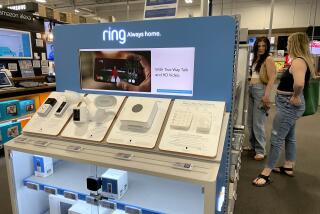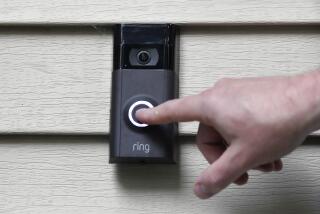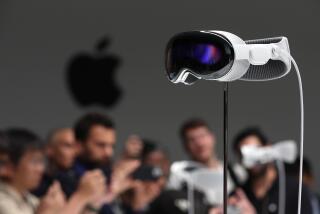Latest Is Not Always Greatest in Cyber World
- Share via
In the frenetic world of high tech, “the next big thing” seems to hit the street every day. So it’s easy to fall prey to the hype--or to hype fatigue.
Even technology hobbyists might react with a shrug when greeted with yet another paradigm-shifting technology, viewing everything as part of the endless churn, the cult of the new.
But with common sense and by asking a few basic questions, you can distinguish background blather from the answer to your techno-prayers.
Is it fast enough?
Speed might be the most distorted quality of the computing age. First, ignore anything a manufacturer tells you about having benchmarked its own product; always look for independent testing. The top trade publications are not perfect, but they’re a far more reliable source.
Second, ignore microprocessor comparisons--a trick that Apple Computer, among others, routinely uses to inflate the relative performance of its machines. Only tests that use applications, such as spreadsheets, 3-D rendering programs and databases, reflect a real user experience because they stress the entire machine--including the storage drive and display subsystem.
And if your needs are simple, buy a modest computer. You don’t need a 333-megahertz Pentium II PC for light word processing, spreadsheet work and Web browsing. You do need a heavyweight machine for serious publishing or database management, or for playing the latest graphic-intensive games.
Next to speed, here’s the second-most confusing element of computer hype: Does the product improve on a simpler, cheaper solution? Remember Apple’s Newton personal digital assistant? The Newton became a laughingstock when, at $1,000 a pop, the hand-held device couldn’t read handwriting--its most hyped feature.
The Newton and a range of other PDAs were on the market for years before they became more convenient, flexible and versatile than a Filofax, an appropriate technology that costs a fraction of its electronic counterparts. A few years later, the PalmPilot finally justified the entire category with decent performance, features and pricing.
The PDA example begs another key question: Is the technology first-generation?
The 1993 Newton was hardly the first faulty, oversold device to hit the high-tech marketplace, but it came at key juncture. Before Newton, many product life cycles were measured in years. Today, hardware or software might expect a shelf life of only a few months or less until being pushed aside by the next iteration.
Rapid innovation often benefits consumers, but it also has led to a massive increase in bug-ridden or inept designs as manufacturers rush to market before the windows (pardon the pun) of opportunity close.
Fortunately, new “bug-fix” versions quickly follow. Microsoft famously gets it right only on the third try--the classic case being Windows, which until the release of version 3.1 was worse than useless.
And unlike new drugs, which can’t be released before extensive testing to prevent harmful side effects, for software, the marketplace is the guinea pig.
“Push”--a Web technology that sends a continuous stream of news or other Web data to your screen--was the most notorious recent example. This resource-hogging distraction was ultimately disconnected by most users when they learned its performance tax outweighed its benefits.
If you don’t have a crying need for a new product or upgrade, why not wait until the eager-beaver early adopters stumble upon the biggest problems and the manufacturer fixes them?
And don’t automatically buy the assumption that the industry will support a new “standard,” as manufacturers often claim. Even when such claims prove true, the new technology will be cheaper and better when industry support actually arrives.
The accelerated graphics port, or AGP, a technology that enhances computer graphics, offers a classic example. Intel released the technology last year as yet another incentive for consumers to buy a new PC. Unfortunately, the first version of AGP didn’t offer any discernible benefit.
And remember that Windows 98 offers precious little that wasn’t already available free on the Web to users of Windows 95.
One final caveat pertains to the endless cycle of upgrade collusion that characterizes the entire PC industry but is most clear in the Wintel alliance: Ever wonder why you rarely see simpler, more nimble consumer applications that require less horsepower taking the market by storm? Microsoft and Intel (with enthusiastic participation by the computer vendors) feed each other’s PC upgrade pressure, pushing greater software complexity and hardware power designed to render older technologies obsolete.
It’s a process that high-tech millionaires swear works best for the consumer.
Times staff writer Charles Piller can be reached via e-mail at charles.piller @latimes.com.






